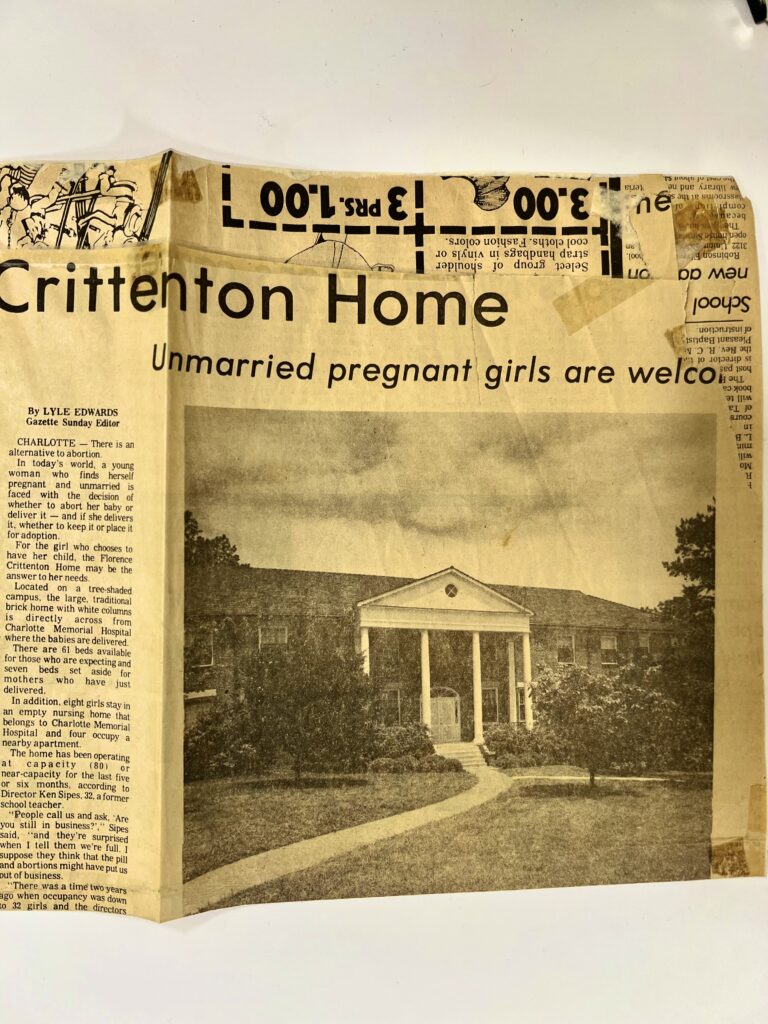
Crittenton was established in Charlotte, NC in 1903. At its start, it was a home of refuge for “unwed mothers” as well as a place for them to hide their shame. Pregnancy out of wedlock was not socially acceptable in those days, so many women and girls chose to hide at maternity homes like Crittenton during their pregnancy before placing their baby for adoption upon birth. Throughout the myriad of changes during the 20th century, we are proud of what Crittenton is now and the function we serve in the community. Instead of shame, we teach self-esteem and empowerment. Instead of hiding, we provide resources for pregnant women and girls to make a life for themselves once they leave Crittenton.
Crittenton has come a long way; however, have you ever wondered how integration was handled within its walls? Integration technically began in schools in 1954 following the Supreme Court’s landmark ruling in Brown v. Board of Education. It took many years to truly implement and slowly, integration spread across more aspects of society. Crittenton began to consider the need that Black women and girls had for its services. It was a need just as great, if not greater, as White women and girls had.
Society was much more patriarchal at the time, so combining sexism and racism, Black women and girls were often at the very bottom of the social latter – a reality that still lingers today.
In a nine-page document from 1964 titled “Whom We Serve,” a Crittenton staff member uses seven of those pages to describe some of their current clients including their characteristics, stories, struggles, hobbies, goals, and looks. At the end of the seventh page, a paragraph starts with “Perhaps one of the most controversial issues to come up in reassessment of services lie in the movement toward integration.” It goes on to describe how there was a “clash of opinions” on the topic within the Board of Directors and so the debate was dropped. Eventually, though, there was community pressure to integrate services.
In 1963, the Board was broken up into six groups, and each group voted unanimously to approve a “limited program of integration.” The narrative goes on to say how the decision in choosing the first “negro” client had to be as “selective as possible.” They wanted to make sure there weren’t any unforeseen issues to arise. Before accepting the first Black client, they had a meeting with the existing White clients and asked how they felt about living and sharing space with a Black client. They each voted in approval of the decision to integrate commenting that “negro girls needed this service as badly as they did.”
The group of White clients discussed how they can be helpful towards the first Black client when she arrives. It’s likely that the White clients at the home understood what it was like to be ostracized and “othered,” and they didn’t want the Black client to feel that way, too. Apparently, the transition to integration was seamless and the Black client had only positive feedback about her experience.
Crittenton consistently had three to four Black clients at a time from 1963-1964. From there, of course, the integration grew and expanded along with society’s changing attitudes and beliefs about Black people. Today, our client base is over 60% Black. It speaks to the growth the organization has experienced in terms of acceptance, but it also reminds us that Black women and girls are still one of the most underserved groups in America, especially in terms of health equity. We are actively working towards and fighting for a future where this is no longer our reality.

Dazia Miller, MPA
Dazia is a development & marketing associate at Crittenton and works on bringing relevant and less-known discussion topics to the forefront. Please reach out to her email at dmiller@crittentonofnc.org for any ideas, questions, or comments. If you want to be a part of the positive change happening at Crittenton, click here.
